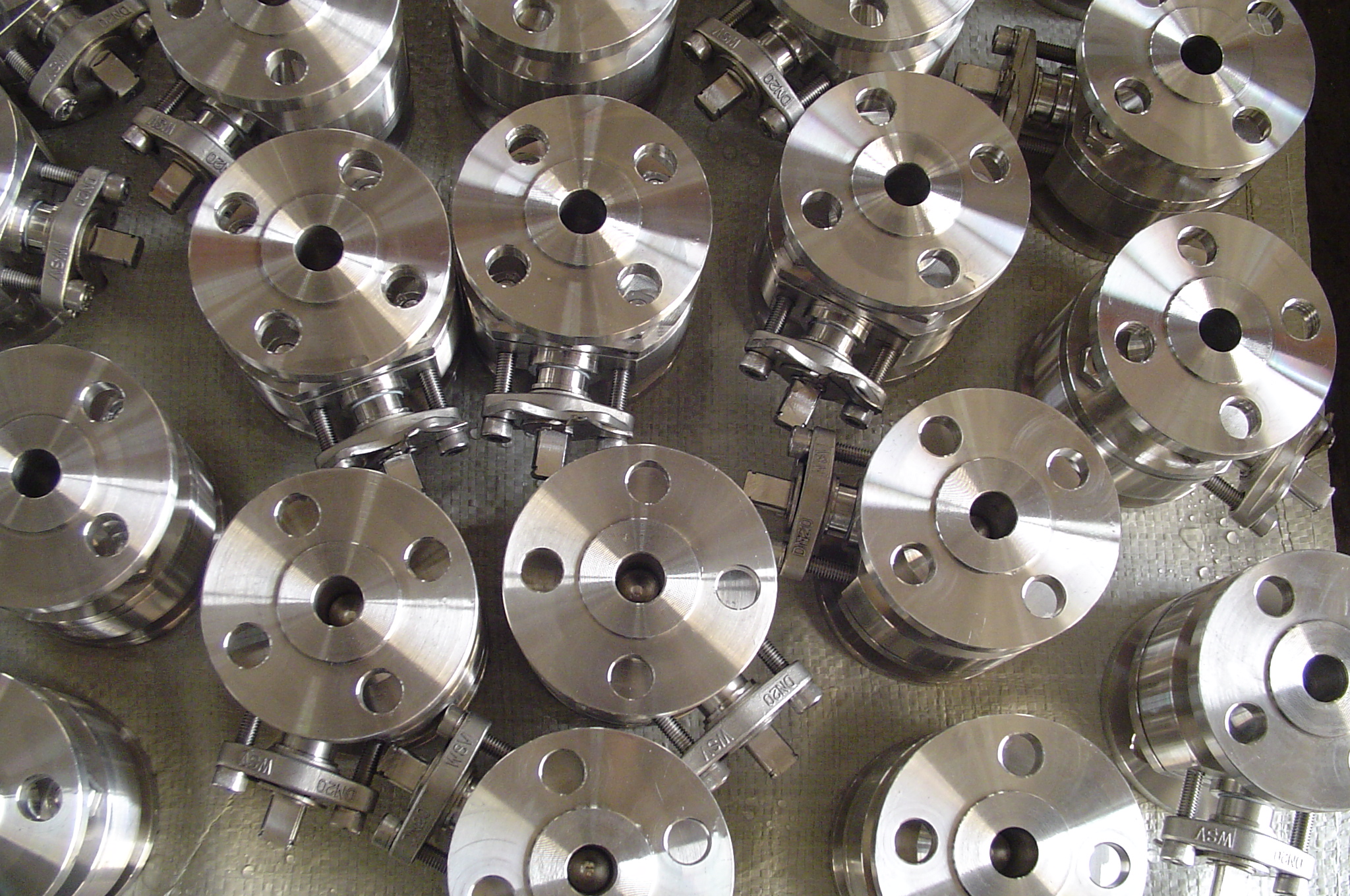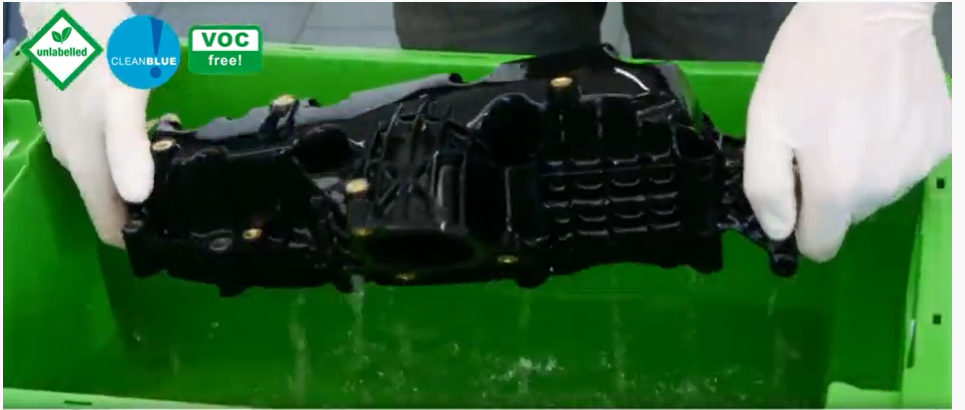There are many types of degreasing cleaning in industrial processes, and each type of cleaning agent has its own advantages, disadvantages and application areas~
The best choice is to carefully confirm the workpiece characteristics and process requirements before selecting a suitable cleaning agent~
1. Water-based industrial cleaning agent
Surfactants are the core components of degreasing agents, and most of them also contain cleaning aids and corrosion inhibitors. Early degreasing agents were mainly based on the emulsification effect of emulsifiers. Excessive use of emulsifiers will emulsify and solubilize the shed oil into the working fluid, resulting in a gradual decline in the oil removal ability of the working fluid and the need for frequent replacement. Generally, a low concentration of surfactant aqueous solution can be used to remove liquid grease and dirt. Various water-based detergents currently available on the market are concentrated solutions mainly composed of surfactants. When used, just add a small amount of water to form a 1~10% aqueous solution.
.jpg)
▲Many types of water-based cleaning agents can meet the different needs of workpieces for dirt and rust prevention
Alkaline cleaning agents are currently one of the main methods for metal cleaning. Since sodium hydroxide and soda ash have no emulsifying effect and have no effect on mineral oil cleaning, cleaning agents containing both sodium silicate and sodium tripolyphosphate can It provides alkalinity and a certain emulsifying power, and is widely used in various degreasing cleaning agents, especially in degreasing processes that are sensitive to alkanes. Listed below are several types of water-based cleaning agents with high cleaning power and economical feasibility. You can choose the appropriate cleaning agent for different needs.
| Water-based cleaning agent | Apply | Acid/Alkali | Features |
| HAKUPUR 196-8 | 2-5%, soak, spray |
Weak base |
Suitable for steel and cast iron, low salt residue and providing high rust resistance to workpieces |
| HAKUPUR 445 | 0.5-5%, soak, spray | Weak base | Suitable for steel and cast iron, as a substitute for strong alkali products |
| HAKUPUR 465 | 1-5%, soak | Weak base | Suitable for steel and cast iron, substitute for strong alkali products |
| HAKUPUR 56-170 | 0.5-3%, soak, spray | Acidic | Suitable for plastic, aluminum alloy, plastic demoulding and aluminum washing, biodegradable |
| HAKUPUR 50-418-2 | 2-10%, soak, spray | Neutral | Suitable for plastic or other sensitive materials, with high stability. |
2. Solvent-based industrial cleaning agent
Using solvent-based cleaners is one of the most common degreasing methods. Solvent-based cleaning agents have strong solubility in grease and low surface tension. The parts to be cleaned can be immersed in the immersion method to remove grease, which can quickly dissolve a large amount of grease and remove it. It is usually used together with other methods, such as steam method and ultrasonic method. The main ingredients may include esters, ketones, alcohols, aliphatic hydrocarbons, diethyl alcohols, etc. However, due to its inherent flammability and volatility, it also poses potential hazards to the environment.

▲Solvent-based cleaning agents have the advantage of quickly removing surface stains and grease by directly dissolving them
(Source: https://commons.wikimedia.org/wiki/File:Duplex-ball- valves-The-Alloy-Valve-Stockist.JPG)
| Solvent-based cleaning agent | Apply | VOC | Flashpoint | Features |
| NIKUTEX 2003 | Wiping, dipping, rinsing | 100% | 63oC |
Used for closed cleaning devices, flushing, steam cleaning, and distillation purification. |
| HAKU1025-920 | Wiping, dipping, rinsing | 100% | 62oC | Used for closed cleaning devices, flushing, steam cleaning, and distillation purification. Mild scent, alternative to low flash point products. |
| HAKU 1025-921 | Wiping, dipping, rinsing | 100% | 60oC | Used for closed cleaning devices, flushing, steam cleaning, and distillation purification. Mild scent, alternative to low flash point products. |
3. Organic solvent and surfactant mixed cleaning agent
In this state, organic solvents can be used in a relatively safe and hygienic manner, especially the transparent solubilizing cleaning agent formed by adding a small amount of lipophilic solvent to the surfactant aqueous solution. It increases the flash point of the cleaning agent and reduces its volatility, thus improving the safety of the original solvent. It does not require the same solvent-based cleaning agent and has a wider application range. The solvents that may be added to the ingredients are mainly alcohols and ethers, and have the characteristics of water-based and solvent-based cleaning agents. However, due to its complex composition and high threshold for chemical stability and synthesis process, it is easy to delaminate if it is not well preserved.
| Water-based solvent mixed cleaning agent | Apply | VOC | Flashpoint | Features |
| CB 100 | Wiping, dipping, ultrasonic | 0% | - |
Heavy soiling, such as heavy and large amounts of grease, paint, paste/solid lubrication (copper paste) |
| UNO S F | Wiping, dipping, ultrasonic |
5% |
- | Can be used at room temperature and is a general purpose cleaner. Can be used for machines, floors, automatic parts, ultrasonic, and pre-painting cleaning purposes |
The following is an example of diesel intake pipe testing:

▲Before cleaning

▲After cleaning
4. Biological water-based industrial cleaning agent
Water-based cleaning agents with microorganisms ensure a long service life of the cleaning fluid. Microorganisms degrade incoming grease during cleaning, reducing cleaning agent contamination, and specialized corrosion inhibitors provide temporary protection after cleaning. The surfactants are selected based on renewable resources. By using biological water-based cleaning agents, the use of solvents can be completely avoided. This makes the cleaner easy to use, store and transport. Protect the environment and improve occupational safety.
| Biological cleaning agent | Apply | Features |
| BC-L | Dipping, rinsing | Recyclable, NSF certified, anti-rust, environmentally friendly ingredients |
| BC-LT | Dipping, rinsing | Recyclable, low-foaming, rust-proof |
Through the introduction of the characteristics of the above four types of cleaning agents, we can find that there are differences between them. Since each process has different requirements and differences depending on the workpiece and cleaning purpose, the nature of the dirt, and anti-rust, it is necessary to evaluate whether the process is suitable and can achieve the expected performance, as well as the acceptable cost before choosing. The following ranks these four types of cleaning agents and compares their advantages and disadvantages for you to use as a reference when choosing a cleaning solution.
| Cleaning agent type | Advantages | Disadvantages |
| Water-based cleaning agent | Low odor and low toxicity, it can handle most grease and dirt by adding different interface active ingredients. | Cleaning tanks often need to be heated and rinsed with pure water, which requires a large amount of wastewater treatment. |
| Solvent-based cleaning agent | High volatility, no rinsing required. Solvents can be recovered and reused in closed systems. | Low boiling point, high volatility, dangerous to operate. Solvent evaporation protection and fire and explosion protection issues need to be considered. |
| Aqueous solvent mixed cleaning agent | It can clean water-soluble dirt and grease at the same time. It has low volatility and does not need to be in a closed system. The operation risk is low. |
It cannot be recycled and the derived wastewater needs to be treated. |
| Biological water-based cleaning agent | It has the advantages of a water-based cleaning agent and can reduce the pollution of the bath liquid, extend the life of the bath liquid and reduce the wastewater treatment load. | The cleaning tank needs to be heated and aerated, |



